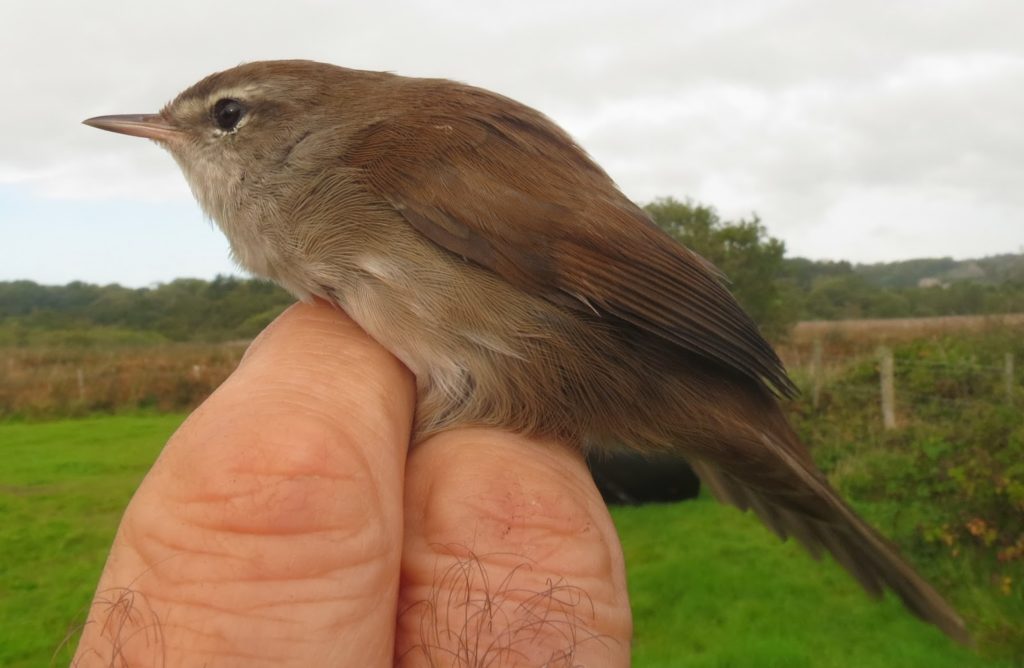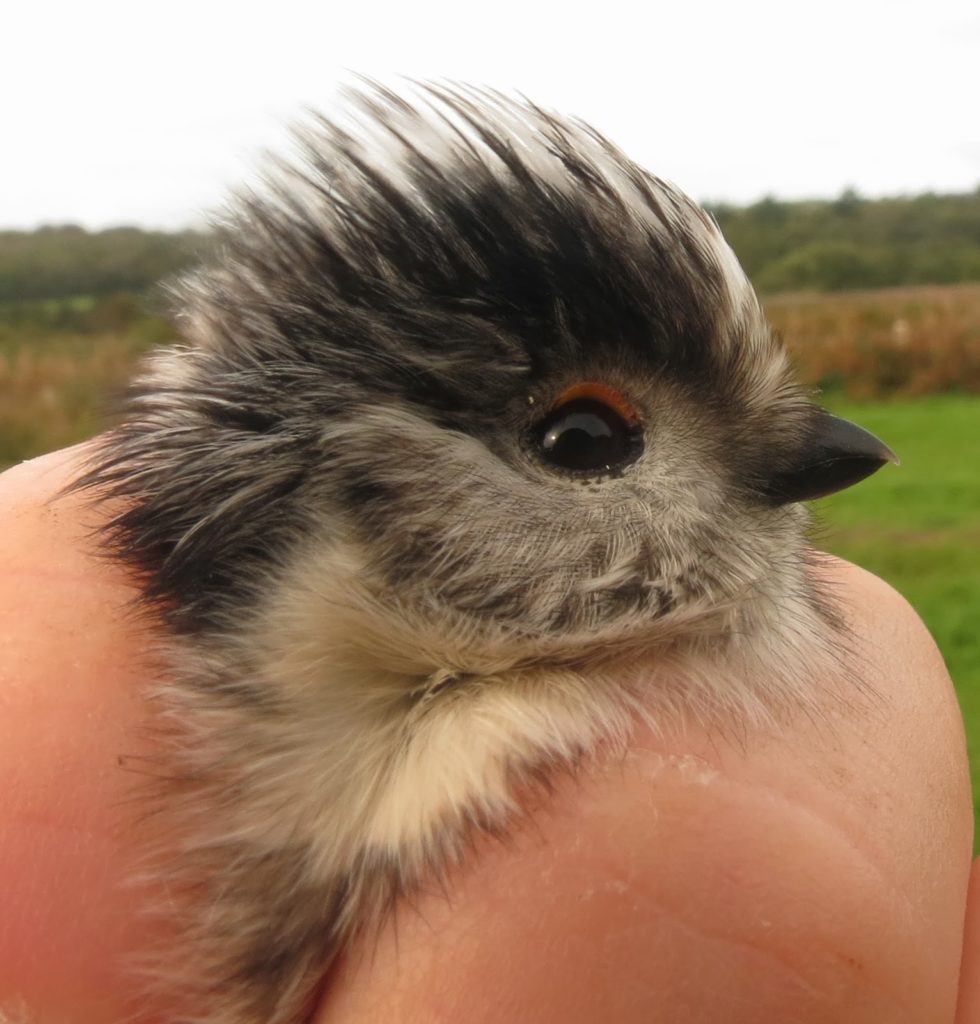Unsettled weather and a forecast of strong south-westerly winds in the build up to the weekend did not inspire confidence that a ringing session would be possible, but in the event the weather was relatively mild.
A total catch of 56 birds comprised: 4 goldcrests, 3 reed buntings, 10 (3) wrens, 2 (1) blackbirds, 1 robin, 24 blue tits, 8 long-tailed tits, 2 great tits and a Cetti’s warbler. Brackets indicate retrapped birds.
The highlight was the Cetti’s warbler. The species can usually be sexed on the basis of wing length and weight, as the male is a larger, heavier bird than the female, and there is limited between-sex overlap in these measurements. The bird we trapped was a female, with a wing length of 58mm and a weight of 11.4 grams. A picture is below.
The feature of the session was the lack of lingering breeding migrants, and the catch was ‘wintery’ in character. Tit flocks were moving through the reed bed – blue tits and wrens were doing their best to make extraction difficult – and overhead redwing and siskin were heard and seen moving west. There were no flocks of goldcrests heard or trapped (the birds caught were all singletons), and the chiffchaffs and blackcaps of recent weeks appeared to have moved on.
The main ageing challenges to wrestle with were therefore the great tits (none of which proved particularly difficult – as the immatures had retained obvious juvenile alula feathers), wrens (where we considered recent research on spot patterns as well as looking for old greater coverts and other features) and reed buntings (all of which were fairly obvious 1st winter birds). The blue tits and long-tailed tits were far easier to assign to an age class: first winter blue tits show clear moult limits in the wing (often retaining some unmoulted greater coverts or alula feathers but always their primary coverts – adults have a wing that is uniform blue in colour); adult and juvenile long-tailed tits both undergo a full moult of flight feathers, making ageing them in the autumn impossible (BTO age code 2). Long-tailed tits are always a pleasant bird to capture. A photograph is below.

